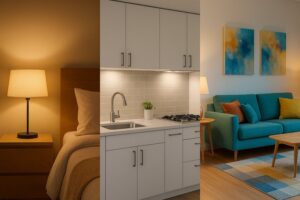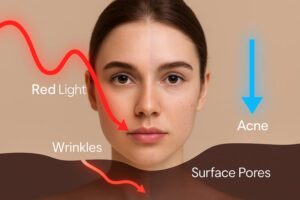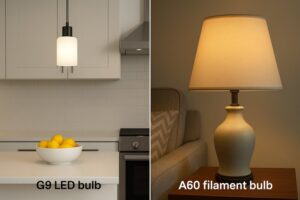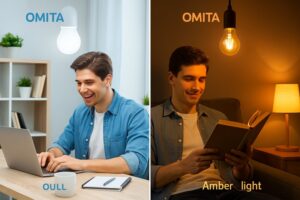You feel tired during the day but "wired" and sleepless at night. This frustrating cycle harms your health and productivity, but you can't figure out the cause.
Modern lighting, especially its color, directly impacts your internal body clock. You can support this natural rhythm by using cool, blue-enriched light during the day to boost alertness and switching to warm, amber light in the evening to signal relaxation and sleep.
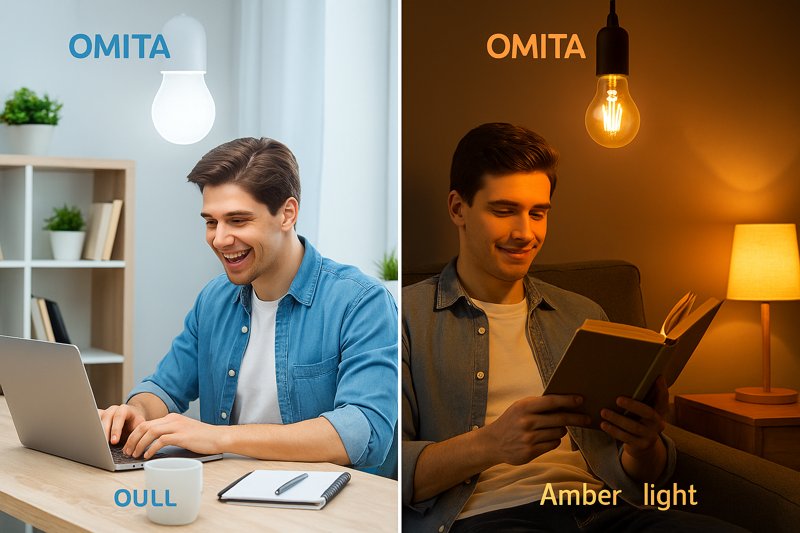
A few months ago, I was speaking with an architect who designs high-end residential homes and wellness retreats. She told me, "Wallson, my clients are no longer just asking for 'bright lights.' They're asking for 'healthy lights'." She explained that her clients are more aware than ever of how their environment affects their sleep and well-being. She now specifies lighting plans based on the time of day a room will be used. Her insight confirmed what we at Omita have known for a long time: the conversation about light has moved beyond just lumens and watts. It's now about biology.
How Does Light Actually "Talk" to Our Brain?
You hear that "blue light" from screens and bulbs is bad for sleep, but the science sounds complicated. This makes it difficult to explain the value of specific bulbs to your own clients.
A special receptor in your eye—separate from vision—detects the blue wavelengths in light. This signal travels to your brain and actively suppresses melatonin, the hormone that makes you sleepy, telling your body it's daytime.
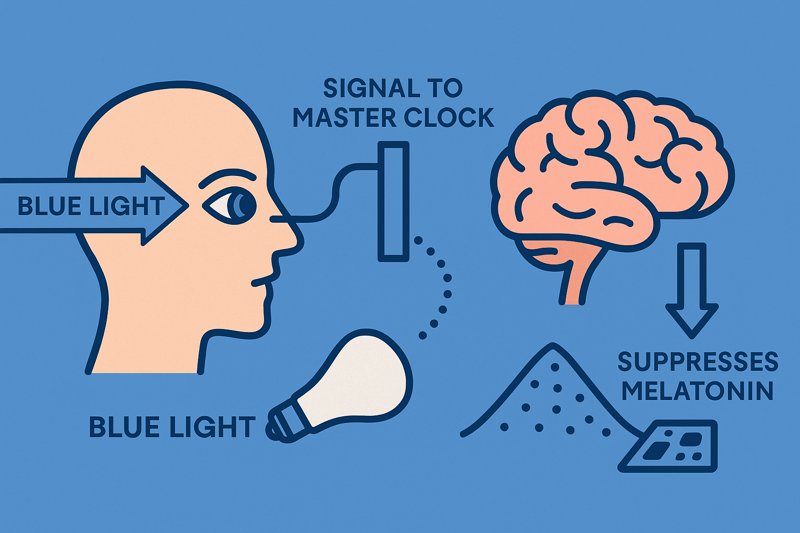
For millions of years, humanity had only two light sources: the bright, blue-rich sun during the day and the warm, dim light of fire or the moon at night. Our bodies evolved a perfect internal clock, called the circadian rhythm, based on this cycle. The invention of artificial light broke this natural rhythm. The mechanism is surprisingly direct. Our eyes contain special cells that act as the gear for this clock. When they detect significant amounts of blue light—which is abundant in sunlight and in cool-white LEDs (4000K and above)—they send a powerful "wake up!" signal to our brain. This is great for daytime focus and productivity. However, when we expose ourselves to that same blue-rich light after sunset, our brain gets confused. It thinks it's still midday and keeps suppressing melatonin. The result? We can't fall asleep easily, and the quality of our sleep suffers.
Light's Effect on Your Body Clock
| Light Type | Color Temperature (Kelvin) | Key Wavelength | Effect on Melatonin | Your Brain's Message |
|---|---|---|---|---|
| Daytime/Task Light1 | 3000K - 5000K | Strong Blue Component | Suppressed | "Stay awake and be alert." |
| Evening/Relaxation Light2 | 2200K - 2700K | Low Blue Component | Released | "It's night. Time to wind down." |
| Omita Solution | Our G9 / A60 4000K bulbs | Our A60 / G95 2200K Amber Glow bulbs | For Focus | For Relaxation |
How Can You Design Lighting for Better Health in Different Spaces?
You know the theory, but every room has a different purpose. A lighting strategy for an office won't work for a hotel room, and a generic approach leads to poor experiences for the people using the space.
By creating distinct lighting zones. Use cooler, energizing light where focus is needed during the day. Implement warmer, dimmer light in spaces used for relaxation and unwinding in the evening.

As a product manager or designer, applying this knowledge is your key to creating spaces that don't just look good, but feel good. The goal is to consciously mimic the natural cycle of the sun indoors. This requires a strategic, not uniform, approach.
The Office: For Peak Productivity
In a workplace, the goal during work hours is alertness and focus. Using general lighting with a cooler color temperature3, around 4000K, helps to suppress melatonin and keep employees energized. This has been shown to reduce errors and improve concentration. By providing light that signals "daytime" to the brain, you are creating an environment optimized for performance.
The Hotel & Restaurant: For Guest Relaxation
For hotel owners, guest comfort is paramount. A traveler arriving in the evening wants to relax and overcome jet lag. Blasting their room with cool, blue-rich light is the worst thing you can do. The lighting here should be a warm sanctuary. We advise our hospitality clients to use bulbs at 2700K or warmer, especially our 2200K LED filament bulbs4, for all guest room and restaurant lighting. This calming amber glow promotes melatonin release, helping guests unwind and prepare for a restful sleep, which is a core part of a positive guest experience.
The Home: For Family Wellness
The home is the most complex environment, requiring a mix of strategies. The kitchen might need brighter, more neutral light (3000K) for the task of cooking. But in the living room and bedrooms, the evening focus must be on winding down. Here, layering light is key. You can have general lighting, but the most-used lights in the evening should be table lamps and floor lamps with very warm bulbs (2200K-2500K). This creates a cozy, firelight-like atmosphere that cues the entire family's body clocks for rest.
What Technology Makes "Human-Centric Lighting" Practical?
The idea of lights changing color throughout the day sounds complicated and expensive. You worry about specifying complex systems that might be unreliable or difficult for the end-user to manage.
The two core technologies are high-quality dimming and tunable white LEDs. Simple, reliable dimming is the easiest first step, while tunable systems offer the most advanced control over light's color temperature.
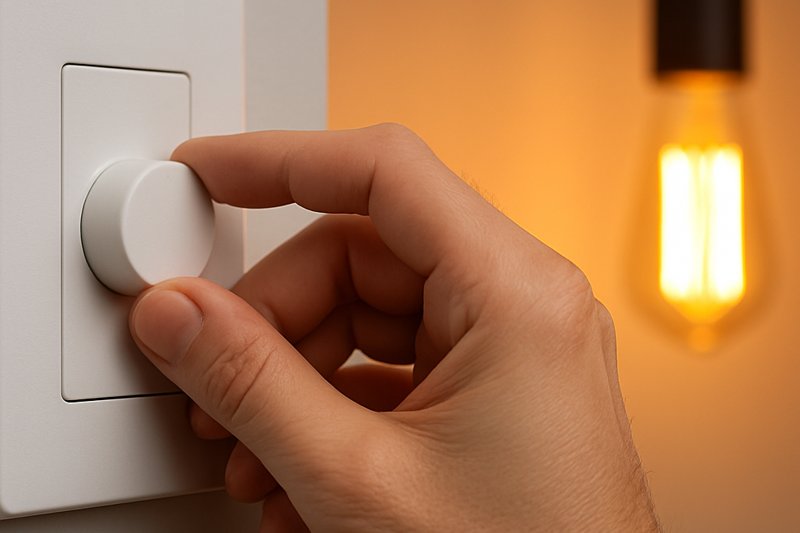
Implementing human-centric lighting doesn't have to be complex. As a manufacturer focused on quality and reliability, we see a clear progression for our customers. It all starts with control.
The Critical First Step: Quality Dimming
The most fundamental way to support circadian rhythm is to reduce the intensity5 of light in the evening. Our brains don't just respond to color, but also to brightness. A bright light of any color can be alerting. This is why specifying a bulb with a smooth, flicker-free dimming capability is essential. A poor-quality driver in an LED can cause flickering or buzzing when dimmed, ruining the relaxing effect. We invest heavily in our driver technology to ensure our bulbs, from the simple A60 to the elegant G125, provide a perfect, stable dimming experience. This is the simplest and most cost-effective way to signal "evening" to the brain.
The Next Level: Warm Dim & Tunable White
"Warm Dim" (or Dim-to-Warm) technology is the next step up. These bulbs automatically shift to a warmer color temperature as you dim them, perfectly mimicking the behavior of an old incandescent bulb or a setting sun. A bulb might be 2700K at full power, but as you dim it down for the evening, it warms to a cozy 2200K amber. This offers dynamic color control with a standard dimmer. The most advanced solution is a "tunable white" system, which uses special fixtures and controls to allow the user to change the color temperature independently of brightness. While powerful, these can be complex. For most applications, a reliable, standard warm bulb (2700K) combined with a high-quality dimmer, or a simple Warm Dim6 bulb, provides 90% of the wellness benefit with 100% of the reliability.
Conclusion
Controlling light's color and intensity is no longer a luxury; it's fundamental to creating healthy buildings. This simple act supports our biology, enhancing wellness and productivity for everyone.
-
Learn how Daytime/Task Light can boost your productivity and keep you alert throughout the day. ↩
-
Discover how Evening/Relaxation Light can enhance your sleep quality and overall well-being. ↩
-
Learn about the impact of cooler color temperatures on alertness and focus, essential for maximizing workplace efficiency. ↩
-
Explore how 2200K LED filament bulbs enhance guest comfort and relaxation, crucial for a positive hotel experience. ↩
-
Understanding light intensity's effect on circadian rhythm can help you optimize your environment for better sleep and health. ↩
-
Exploring Warm Dim technology can enhance your knowledge of lighting solutions that improve ambiance and well-being. ↩


